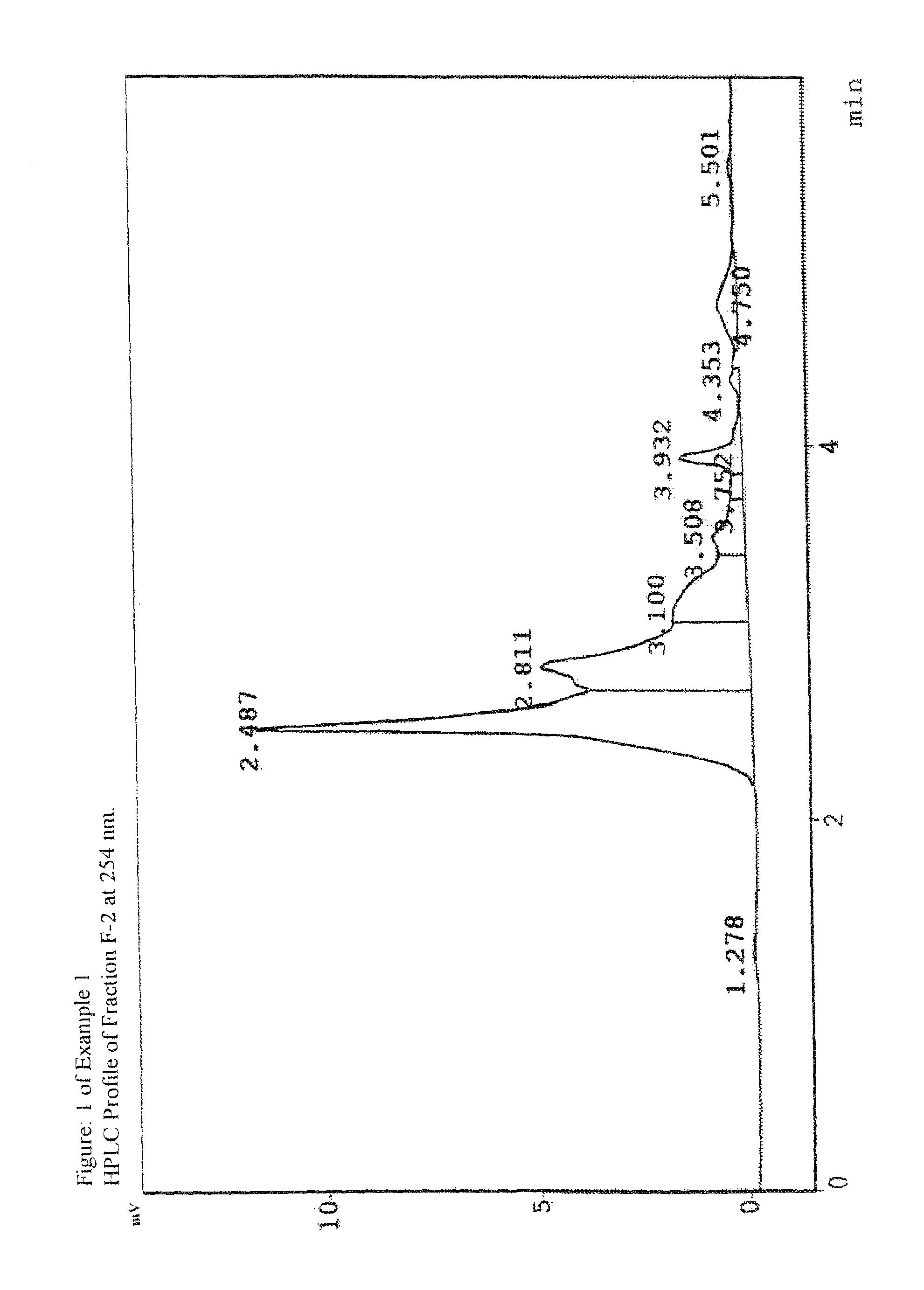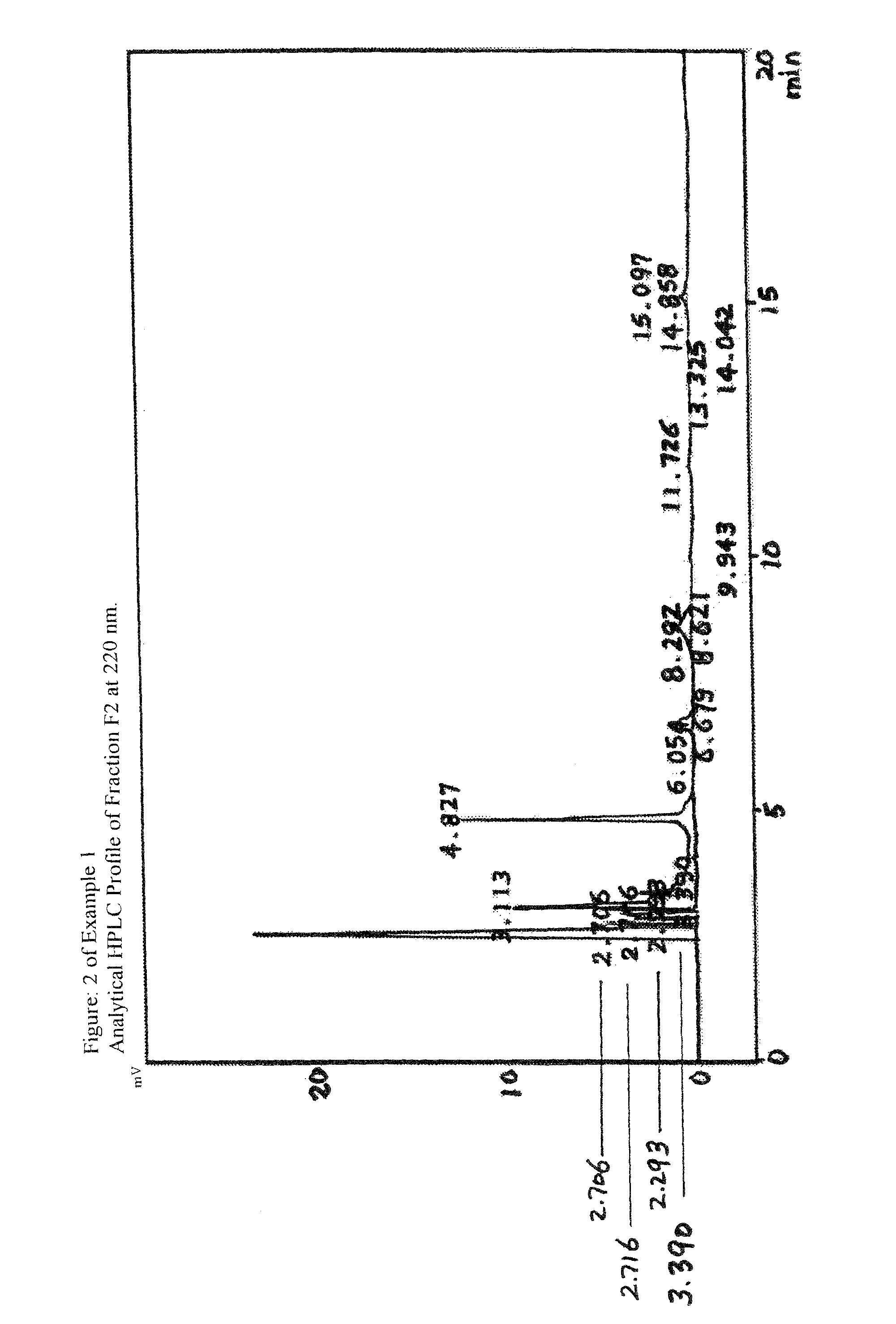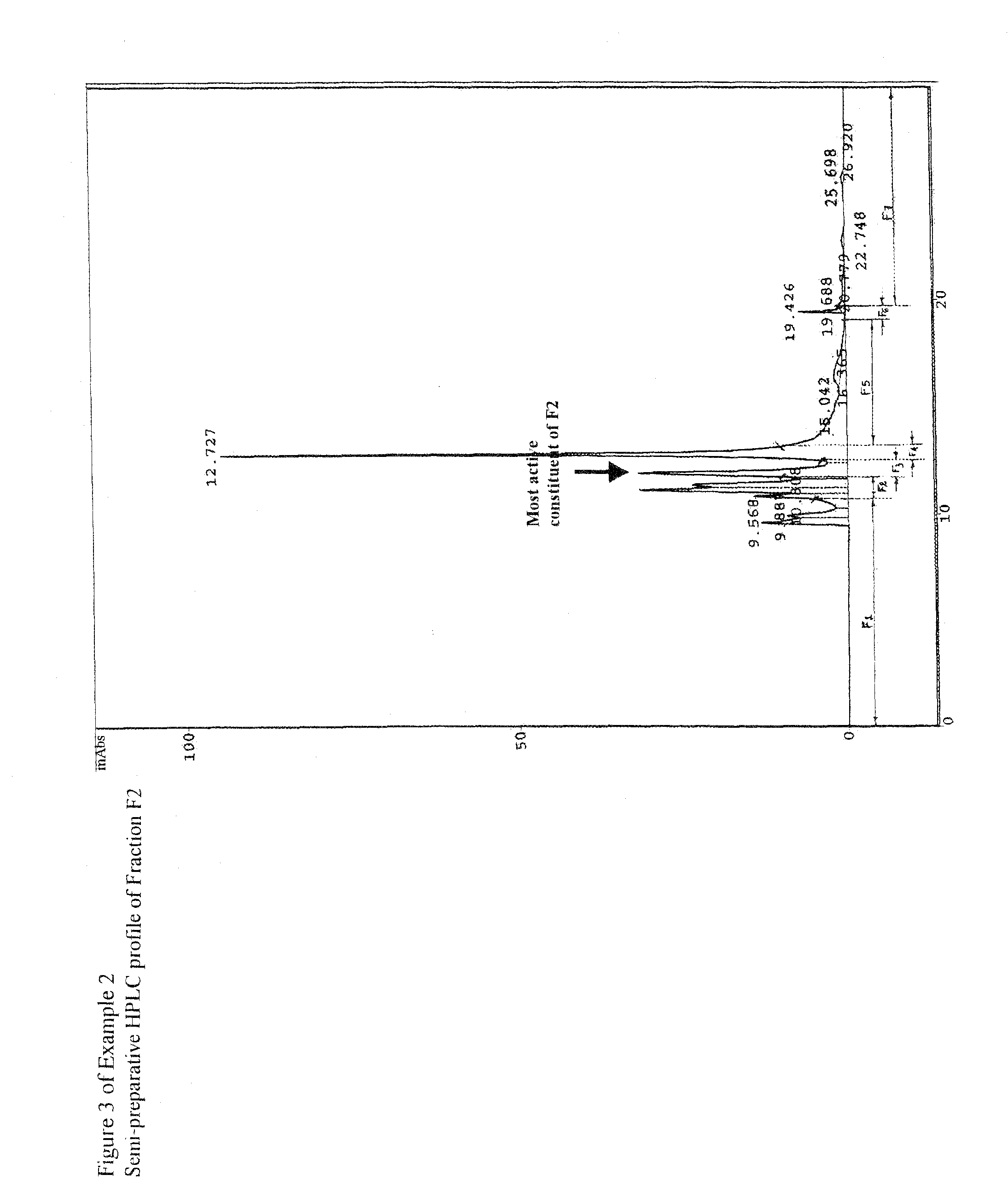Antitubercular extracts of Salicornia brachiata
a technology of antibacterial extract and salicornia brachiata, which is applied in the direction of antibacterial agents, drug compositions, biocides, etc., can solve the problems of prolonged intake/duration of therapy, difficulty in effectively treating patients with drug resistant diseases, and mycobacterium still living in the subject, so as to increase the mean survival time of infected mice
- Summary
- Abstract
- Description
- Claims
- Application Information
AI Technical Summary
Benefits of technology
Problems solved by technology
Method used
Image
Examples
example-1
[0158]Wildly growing Salicornia brachiata was collected on or before the stage of maturity (November to March) from Gulf of Cambay, India, more precisely from a location at 21° 46′ N Latitude & 72° 11′ E Longitude to 20 42′ N latitude and 71° 01′ E longitude (21° 75′ N Latitude & 72° 17′ E Longitude to 21° 09′ N latitude and 72° 00′ longitude) as disclosed in U.S. patent application Ser. No. 10 / 829,400 dated 22nd Apr. 2004 and PCT patent application No. PCT / IN03 / 00292 dated 29th Aug. 2003. The different parts of the plant were then further processed for crude extract preparation with the solvents: methanol-water (95:5), methanol-water (1:1) at ambient temperature and pure water at 80-90° C. These crude extracts were subjected to bioassay for anti-tubercular activity. The results of bioactivity for many parts found are as under:
[0159]
% Mice surviving onSrPlant partSolvent SystemDifferent days1RootMethanol-Water (1:1)17% up to 28 days2RootWater (100%)17% up to 35 days3Whole PlantWater...
example-2
[0161]1 g. of the F-2 fraction of Example 2 was processed on 10μ RP-18 semi-prep column (Phenomenex, U.S.A.), the flow rate was 6 mL / min, the run period was 28 min and the UV detection wavelength was 220 nm. The HPLC trace is shown in FIG. 3. Subsequently, 50 injections were carried out with a total of 1 g of the F2 fraction and seven sub-fractions (SF-1 to SF-7) were collected as shown in FIG. 3. The sub-fractions were concentrated on rotary evaporator and subsequently freeze dried at −58° C. The weights of the individual sub-fractions were: 238 mg, 312 mg, 160 mg, 5 mg, 9 mg, 1 mg and 8 mg for SF1 to SF7 respectively.
example 3
[0162]The sub-fractions SF-1 to SF-7 of Example 2 were tested against M. tuberculosis H37Rv in-vitro. The SF3 sub-fraction was consistently found to be active in inhibiting growth and colony forming ability of M. tuberculosis H37Rv on 7H10 Middlebrook's medium containing OADC, indicating that the peak shown with an arrow in FIG. 3 is likely the peak corresponding to the most active constituent. (As per the activity flow chart).
PUM
 Login to View More
Login to View More Abstract
Description
Claims
Application Information
 Login to View More
Login to View More - R&D
- Intellectual Property
- Life Sciences
- Materials
- Tech Scout
- Unparalleled Data Quality
- Higher Quality Content
- 60% Fewer Hallucinations
Browse by: Latest US Patents, China's latest patents, Technical Efficacy Thesaurus, Application Domain, Technology Topic, Popular Technical Reports.
© 2025 PatSnap. All rights reserved.Legal|Privacy policy|Modern Slavery Act Transparency Statement|Sitemap|About US| Contact US: help@patsnap.com



